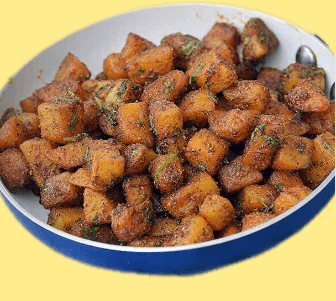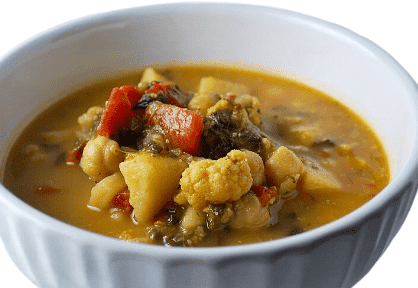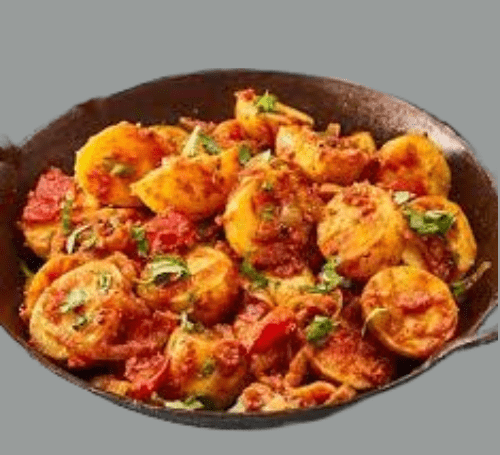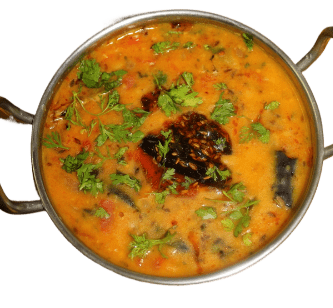Rasam
Intrduction :
Rasam, a quintessential South Indian soup, is a staple in many households across the southern states of India. Known for its tangy, spicy, and aromatic flavors, rasam is a versatile dish that is both comforting and nutritious. Typically served with rice, it can also be enjoyed as a soup on its own. This article delves into the history, cultural significance, ingredients, step-by-step preparation, variations, and tips for perfecting rasam. By the end, you’ll have a comprehensive understanding of this beloved dish and the ability to create it in your own kitchen.
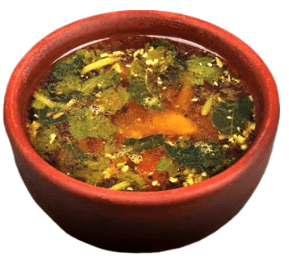
History and Cultural Significance :
Rasam, which means “essence” or “juice” in Tamil, has been a part of South Indian cuisine for centuries. Its origins can be traced back to Tamil Nadu, but it is equally popular in Karnataka, Andhra Pradesh, and Kerala, each region adding its unique touch to the dish.
Traditionally, rasam was made using tamarind water, pepper, and a few other spices. Over time, the recipe evolved, incorporating tomatoes, lentils, and various spices to enhance its flavor and nutritional value. Rasam is often served as the second course in a traditional South Indian meal, following sambar and before the curd rice.
Culturally, rasam is more than just food; it is a symbol of warmth and hospitality. In many households, it is the go-to remedy for colds and digestive issues, thanks to its medicinal properties derived from spices like pepper, cumin, and turmeric.
Ingredients :
The beauty of rasam lies in its simplicity and the use of fresh, wholesome ingredients. Here’s a list of the essential ingredients you’ll need to make a traditional rasam:
Basic Ingredients
- Tamarind: A small lemon-sized ball or 2 tablespoons of tamarind paste.
- Tomatoes: 2 medium-sized, chopped.
- Turmeric Powder: 1/2 teaspoon.
- Salt: To taste.
- Water: 4 cups.
For Rasam Powder
- Coriander Seeds: 2 tablespoons.
- Cumin Seeds: 1 tablespoon.
- Black Peppercorns: 1 teaspoon.
- Dry Red Chilies: 2-3.
- Toor Dal (Split Pigeon Peas): 1 tablespoon.
- Fenugreek Seeds: 1/4 teaspoon.
For Tempering
- Ghee or Oil: 1 tablespoon.
- Mustard Seeds: 1 teaspoon.
- Cumin Seeds: 1/2 teaspoon.
- Dry Red Chili: 1, broken.
- Asafoetida: A pinch.
- Curry Leaves: A sprig.
- Garlic: 2-3 cloves, crushed (optional).
Garnish
Fresh Coriander Leaves: Chopped, for garnish.
Step-by-Step Preparation :
Making rasam is an art that involves balancing flavors and aromas. Follow this detailed guide to master the preparation of traditional rasam.
Preparing the Tamarind Water
Soak the tamarind in warm water for about 15 minutes.
Squeeze the pulp and extract the juice. If using tamarind paste, dilute it in water to get a thin consistency.
Making the Rasam Powder
In a pan, dry roast coriander seeds, cumin seeds, black peppercorns, dry red chilies, toor dal, and fenugreek seeds on low heat until fragrant.
Allow the roasted spices to cool.
Grind the spices into a fine powder using a spice grinder or mortar and pestle.
Store the rasam powder in an airtight container. You can prepare this in larger quantities and store it for future use.
Preparing the Rasam Base
In a pot, combine the tamarind water, chopped tomatoes, turmeric powder, and salt.
Bring the mixture to a boil and let it simmer until the tomatoes are soft and cooked.
Using a ladle, slightly mash the tomatoes to enhance the flavor of the rasam.
Adding the Powder
Add 2-3 teaspoons of the freshly prepared rasam powder to the pot.
Stir well and let the mixture simmer for another 5-7 minutes, allowing the flavors to meld together.
Tempering the Rasam
In a small pan, heat ghee or oil.
Add mustard seeds and let them splutter.
Add cumin seeds, dry red chili, asafoetida, curry leaves, and crushed garlic (if using). Sauté for a few seconds until fragrant.
Pour the tempering over the simmering rasam and immediately cover the pot to retain the aroma.
Final Touch
Add freshly chopped coriander leaves to the rasam.
Taste and adjust the seasoning if necessary.
Let the rasam sit covered for a few minutes before serving to allow the flavors to blend.
Variations :
Rasam can be adapted in numerous ways to create different flavor profiles. Here are some popular variations:
Tomato Flavour
A simpler version focusing on the tanginess of tomatoes. Skip the tamarind and use more tomatoes for the base.
Pepper Flavour
Known for its strong peppery flavor, this version is excellent for soothing colds and sore throats. Increase the quantity of black peppercorns in the rasam powder.
Lemon Flavour
A refreshing variation where lemon juice is added at the end instead of tamarind. This rasam has a bright, tangy flavor.
Garlic Flavour
Garlic is used both in the tempering and in the rasam base, providing a robust and aromatic flavor. It’s known for its health benefits, especially in boosting immunity.
Dal Flavour
Cooked toor dal (split pigeon peas) is added to the rasam, making it thicker and more nutritious. This version is also known as paruppu rasam.
Pineapple Flavour
A unique, sweet-tangy variation made with pineapple. This rasam is a favorite in certain regions of Tamil Nadu.
Tips And Tricks :
- Balance the Tanginess: The key to a good rasam is balancing the tanginess from tamarind or tomatoes with the right amount of spices and salt.
- Fresh Spices: Using freshly ground spices makes a significant difference in the flavor.
- Simmer, Don’t Boil: Rasam should be simmered gently to develop its flavors. Avoid vigorous boiling, which can make it too sour or bitter.
- Right Consistency: Rasam should have a soup-like consistency. If it’s too thick, add a little water to thin it out.
- Resting Time: Allowing the rasam to sit for a few minutes after tempering helps the flavors to meld together.
Serving Suggestions :
Rasam is typically served with hot steamed rice and a dollop of ghee. It pairs well with a side of vegetable stir-fry, papadums, and pickles. Here are some serving suggestions:
Rasam Rice: Serve it over rice with a side of fried or sautéed vegetables.
As a Soup: Enjoy it as a light, comforting soup, especially on a cold day.
With Idli or Dosa: It can be served with idli or dosa for a delicious breakfast or dinner option.
With Snacks: Sip on rasam along with savory snacks like vadas or pakoras.
Read More : Andhra Chilli Chicken
Conclusion :
Rasam, with its rich history and cultural significance, is a cherished dish in South Indian cuisine. Its tangy, spicy, and aromatic flavors make it a comforting and versatile dish that can be enjoyed in various ways. By following this detailed guide, you can master the art of making traditional rasam and explore its many variations. Whether you serve it with rice, enjoy it as a soup, or pair it with other South Indian delicacies, rasam is sure to bring warmth and comfort to your table.
So, gather your ingredients, put on your apron, and embark on a culinary journey to create the perfect rasam. Happy cooking!
